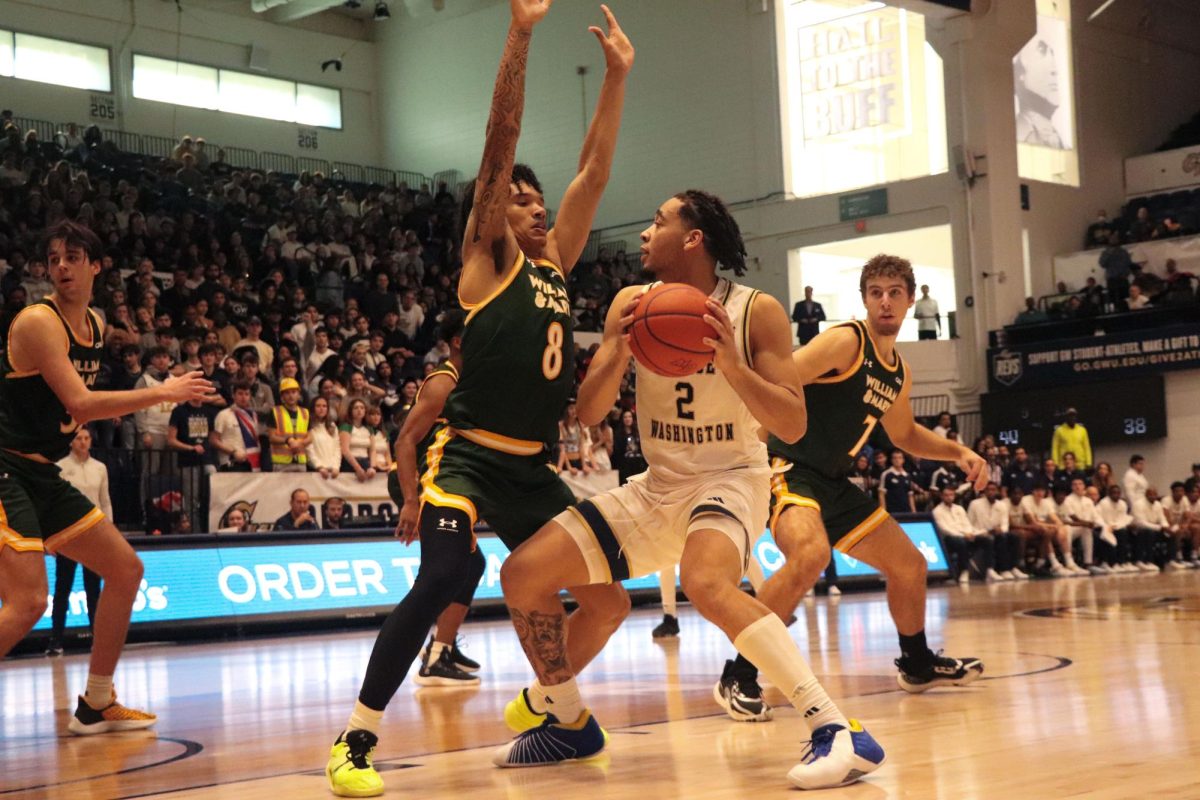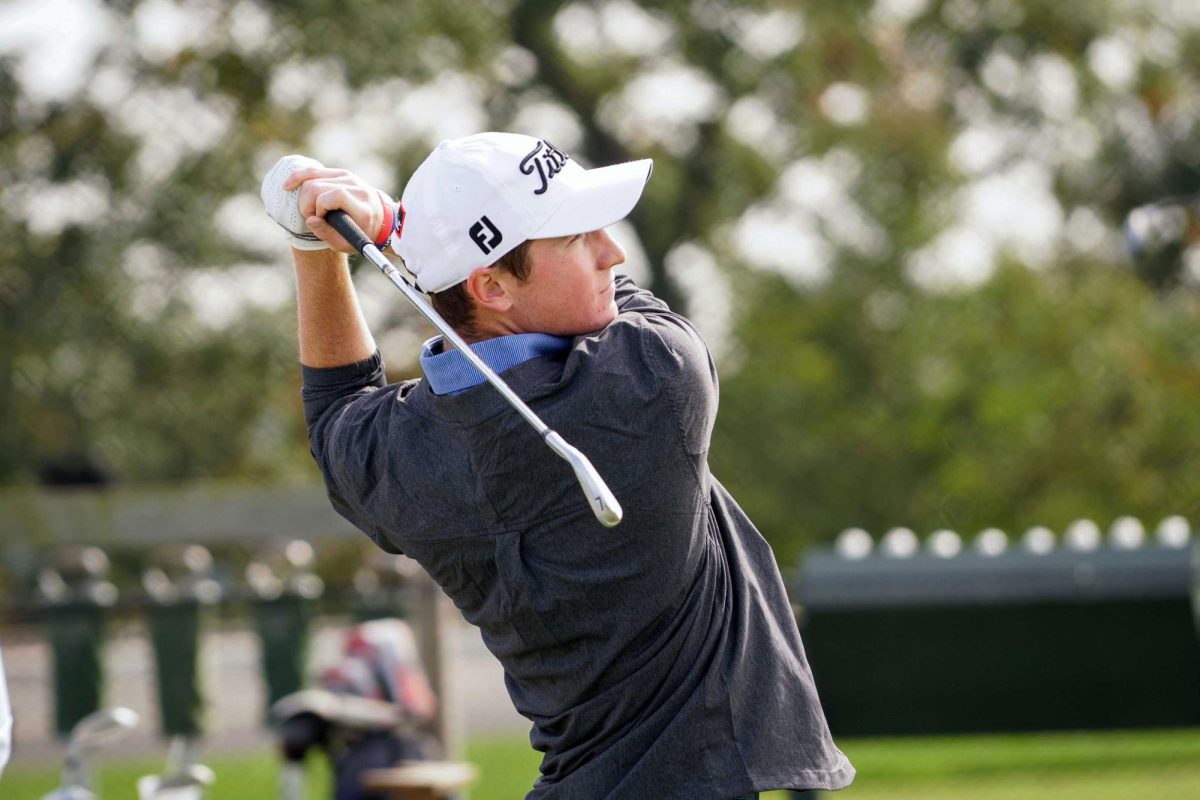Athletic success depends on a healthy lifestyle. To achieve either, it takes extensive practice and dedication. And both demand making the right decisions when grocery shopping.
After an early morning practice Saturday, the men’s rowing team headed to the Foggy Bottom Whole Foods Market to meet with healthy eating specialist Katherine Albers to learn tips and tricks for making the right daily nutritional decisions.
The session began with a simple mandate from Albers, who gave the Colonials a quick way to make snap decisions about food purchases: “If your grandmother doesn’t know what’s in it, don’t get it.”

From there, the team walked through just about every aisle in the supermarket, beginning with an array of fresh fish arranged on ice. Salmon is the best choice, Albers said, because it is relatively inexpensive and boasts important fatty acids. The Colonials passed rows of colorful fruits and vegetables, finishing with Whole Foods’ varied selection of rice and grains.
Albers told the team to stay away from any food that includes trans fats, and cautioned them to read ingredient lists instead of blindly trusting packaging. For example, just because the label says the bread is wheat, Albers explained, does not always mean it is made from whole grains. It was an important lesson, senior Adam Bair said – especially for student-athletes, who already require more food than the average student.
“Bigger guys have higher base metabolic rates, like most of us are over 2,000 calories based on metabolic rates anyway,” Bair said. “So that means if I just sat and did nothing the entire day, I would burn over 2,000 calories.”
The tour was interactive, with the team trying samples of sweet potato chips, trail mix, performance bars and almond butter as examples of food that would work well with their training regimen.
Knowing what food to choose to supplement their exercise is vital, senior rower Sam Goldberg explained. He said members of the men’s rowing team typically burns about 1,000 calories in an hour-long workout – and GW tends to have 18 hour-long workouts over the course of a single week. Bair estimates the Colonials eat between 4,000 and 6,000 calories daily to make up for the deficit, about two to three times more than the normal recommendation.
“An hour of us working out, that burns about a thousand calories, so just to get back to zero we have to eat a thousand calories,” Goldberg said. “And then we need to eat more because we have fast metabolisms and need to be gaining muscle.”
Attempting to juggle being a student, athlete and make healthy food choices can be daunting, Bair acknowledged, and there’s always temptation to grab whatever’s easily at hand, rather than consider its nutritional value.
“Sometimes, with exams and everything and just being exhausted, there’s a point where you’re burning so many calories you do just eat to eat because you have to get it in,” Bair said.
But drawing upon the lesson of the team’s Whole Foods trip, he explained that the wrong nutritional choices can detract from the time spent training.
Education on a healthy lifestyle might seem like a different approach to rowing than time spent training on the water and on erg machines, but supplementing the team’s physical activity with the proper food intake makes those workouts more worthwhile.
“If you’ve ever eaten McDonald’s, it feels like it’s almost taking food out of you instead of putting it back in,” Bair said. “Taking the time to actually have something more nutritious just generally benefits you in the long run.”







